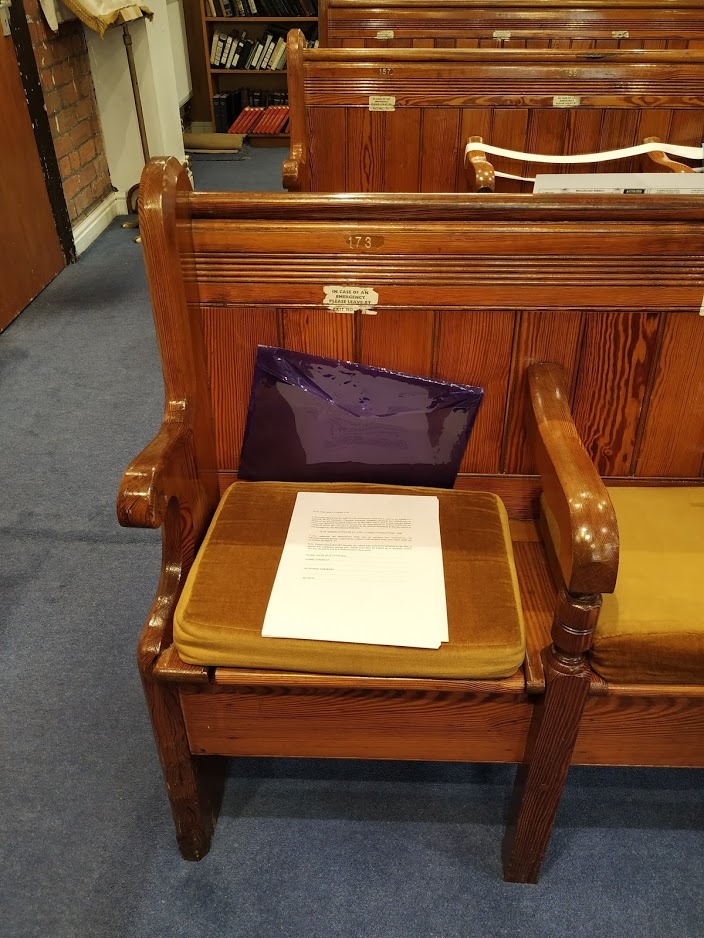



Please note the times are specific to London, for Manchester times please consult our timetable.










Making Pesach: Why So Extreme?
Q & A on Parashat Tzav
- What separated the kohen's skin from the priestly garments?
- How often were the ashes removed from upon the mizbe'ach? How often were they removed from next to the mizbe'ach?
- If someone extinguishes the fire on the mizbe'ach, how many Torah violations has he transgressed?
- The portion of a flour-offeringoffered on the mizbe'ach may not be chametz. But is the kohen's portion allowed to be chametz?
- When a kohen is inaugurated, what offering must he bring?
- What three baking processes were used to prepare the korban of Aharon and his sons?
- What is the difference between a minchat kohen and a minchat Yisrael?
- When is a kohen disqualified from eating from a chatat?
- What is the difference between a copper and earthenware vessel regarding removing absorbed tastes?
- Can an animal dedicated as an asham be replaced with another animal?
- How does an asham differ from all other korbanot?
- Unlike all other korbanot, what part of the ram or sheep may be placed on the mizbe'ach?
- What three types of kohanim may not eat from the asham?
- In which four instances is a korban todah brought?
- Until when may a todah be eaten according to the Torah? Until when according to Rabbinic decree?
- How does a korban become pigul?
- Who may eat from a shelamim?
- What miracle happened at the entrance of the Ohel Moed?
- Other than Yom Kippur, what other service requires that the kohen separate from his family?
- What are the 5 categories of korbanot listed in this Parsha?
All references are to the verses and Rashi's commentary, unless otherwise stated.
- 6:3 – Nothing.
- 6:4 –
A) Every day.
B) Whenever there was a lot. - 6:6 – Two.
- 6:10 – No.
- 6:13 – A korban mincha — A tenth part of an ephah of flour.
- 6:14 – Boiling, baking in an oven and frying in a pan.
- 6:15 – The minchat kohen is burnt completely. Only a handful of the minchat Yisrael is burnt, and the remainder is eaten by the kohanim.
- 6:19 – If he is tamei (spiritually impure) at the time of the sprinkling of the blood.
- 6:21 – One can remove an absorbed taste from a copper vessel by scouring and rinsing, whereas such a taste can never be removed from an earthenware vessel.
- 7:1 – No.
- 7:3 – It can only be brought from a ram or sheep.
- 7:3 – The tail.
- 7:7 – A t'vul yom (a tamei kohen who immersed in a mikveh yet awaits sunset to become tahor); A mechusar kipurim (a tamei person who has gone to the mikveh but has yet to bring his required offering); An onan (a mourner prior to the burial of the deceased).
- 7:12 – Upon safe arrival from an ocean voyage; Upon safe arrival from a desert journey; Upon being freed from prison; Upon recovering from illness.
- 7:15 –
- 7:18 – The person slaughters the animal with the intention that it be eaten after the prescribed time.
- 7:19 – Any uncontaminated person (not only the owner).
- 8:3 – The entire nation was able to fit in this very small area.
- 8:34 – The burning of the parah adumah (red heifer).
- Olah (6:2); mincha (6:7); chatat (6:18); asham (7:1); shelamim (7:11).

ביעור ומכירת חמץ
ביעור חמץ
ביום י”ד בניסן
בבוקר, , מבערים את החמץ עד סוף
הזמן הקרוי לביעורו (ובארץ ישראל סוף זמן שריפת חמץ בשנה זו הוא בערך בשעה אחת
עשרה ורבע בבוקר, וסוף זמן אכילת חמץ הוא כחמש דקות לפני השעה עשר בבוקר, ובכל
מקום יש לנהוג כפי שמופיע בלוחות השנה המוסמכים).
כיצד מצות ביעור חמץ? שורפו או פוררו לפירורים דקים,
וזורהו ברוח או זורקו לים. והמנהג לשורפו באש. וחמץ שהושלך לאשפה (חוץ לבית, לפני
זמן איסור אכילת חמץ), אין חובה מן הדין לשרפו.
“חמץ שעבר עליו הפסח“
כל המשהה חמץ ברשותו בימי
הפסח, ביטל מצות עשה, שנאמר “תשביתו שאור מבתיכם”, ועבר על לא תעשה,
שנאמר “לא יראה לך חמץ”. לפיכך קנסו חכמים את מי שעבר על איסור זה,
ואמרו (פסחים כח.): “חמץ של ישראל שעבר עליו הפסח אסור בהנאה”. וחמץ זה
נאסר בהנאה בין לאותו אדם שהשהה אותו בפסח, בין לאנשים אחרים, ואף אם לא ידעו אותם
האחרים שחמץ זה עבר עליו הפסח, היודע מכך, חייב להודיעם ולהפרישם, להצילם ממכשול
שלא יאכלו ממנו.
מכירת חמץ
נהגו ישראל, ובפרט בעלי
חנויות, מפעלים, מחסנים וכדומה, למכור את החמץ לגוי בערב פסח. וניתן לעשות מכירת
חמץ באמצעות חתימה על “הרשאה” למכירתו, על ידי רבני בתי הכנסת שבכל מקום
ומקום. ומומלץ מאד לעשות “מכירת חמץ” כנהוג, בפרט למי שרוצה להשאיר
ברשותו מיני חמץ שחבל לו לאבדם, כגון משקאות יקרים וכדומה.
ותוקף מכירת החמץ, הוא משום שחמץ שהיה ביד הגוי בימי
הפסח, לא נאסר בהנאה לאחר הפסח, משום שהגויים אינם מצווים על איסור חמץ כלל, ומותר
להם להחזיקו ברשותם בחג הפסח. לפיכך, על ידי מכירת החמץ, באופנים המועילים על פי
התורה, נמכר החמץ לגוי באופן מוחלט.
וכיצד עושים את המכירה? רבני הערים שבכל מקום, נפגשים
עם הגוי ביום ערב פסח, ומסבירים לו היטב את תוכן השטר עליו הוא עתיד לחתום. והגוי
משלם “מיקדמה” בסך כמה מאות שקלים על כל החמץ שמוכרים לו, ומסוכם עמו,
שלאחר ימי הפסח, אם ירצה, יוכל לשלם את יתרת החוב (העולה לכמה מאות מליוני שקלים,
או לסכום אחר, על פי ערך החמץ הנמכר), ואז יהיה רשאי ללכת בעצמו ולקחת את החמץ בכל
מקום שיחפוץ. ואם לא ישלם את יתרת החוב, יחזור החמץ לבעליו היהודים, שיוכלו
לאכול ממנו ולסחור בו כרצונם.
ואף על פי שהדבר ידוע כמעט בבירור מוחלט, שהגוי לא
יבא לאחר ימי הפסח לקחת אליו את החמץ, מכל מקום מאחר שיש בידו לעשות כן, המכירה
מועילה. וכמו שכתב מרן השלחן ערוך (בסימן תמח) בזו הלשון:
“ואם מכרו או נתנו (את
החמץ) לאינו יהודי במתנה קודם הפסח, אף על פי שמכרו לאינו יהודי, ויודע בו שלא יגע
בו כלל, אלא ישמרנו לו (עבור היהודי) עד לאחר הפסח, ויחזור ויתננו לו, מותר”.
ומקור דבריו ממה שכתב התרומת הדשן בדין זה.
היכן להניח את החמץ המכור
המוכר את חמצו לגוי, צריך
להצניע אותו בארון או בחדר מיוחד, ולציין על הארון שמדובר בחמץ. ועל ידי כך לא
יבוא לידי מכשול בחג הפסח, ולאכול מן החמץ.
רכישת מוצרים אחר הפסח
כל הירא לדבר ה' לא יקנה
לאחר הפסח שום מצרך שיש בו חמץ, אלא מבעלי מכולת וצרכניה יראי שמים שמכרו את החמץ
שלהם לגוי, על ידי הרבנות המקומית, או על ידי גוף כשרות אחר, כנהוג.
Elimination and Sale of
Chametz
Elimination of Chametz
On the morning of the Fourteenth of Nissan, one must eliminate Chametz before the
last time to do so arrives. (In Jerusalem, the latest time for burning and
renouncing Chametz is at approximately 11:15 AM and the latest time for eating
Chametz is at approximately 9:55 AM. In New York City, the end time for burning
and renouncing Chametz is at approximately 11:25 AM according to the Sephardic
custom. All Chametz must be burnt, renounced, and sold by this time. The latest
time for eating Chametz in New York City is at approximately 10:05 AM according
to the Sephardic custom. Every location should follow the times listed on the
accepted calendars in that location.)
How does one perform the
Mitzvah of eliminating Chametz? One must burn it or crumble it into tiny pieces
and throw it to the wind or into the sea. The custom though is to burn it.
Chametz which was thrown into a public trash receptacle (not in one’s possession
and before the time when Chametz becomes forbidden) need not be burned
according to Halacha.
“Chametz Which Pesach
Has Passed Over”
One who has kept Chametz in one’s possession on Pesach has nullified the
positive commandment of “You shall eradicate leaven from your homes” in
addition to transgressing the negative commandment of “Chametz shall not be
seen with you.” Our Sages have thus fined one who has transgressed this
commandment by decreeing (Pesachim 28a): “Chametz owned by a Jew which was in
his possession during Pesach is prohibited to benefit from.” Such Chametz
becomes prohibited to benefit from for the person who kept it in his possession
on Pesach as well as for others. Even if others do not know that this Chametz
was kept during Pesach, one who does know must notify others of this in order
to prevent them from the prohibition of eating it.
Sale of Chametz
It is customary among the Jewish people, especially with regards to store,
factory, and warehouse owners, to sell one’s Chametz on Erev Pesach. The sale
of Chametz can be carried out by signing a “power of attorney” appointing a
Torah scholar to sell it which can be obtained from rabbis of synagogues all
over the world. It is highly advised that one carry out this “Sale of Chametz”
as is customary, especially for those who would like to keep Chametz which
would be wasteful to dispose of in their possession, such as expensive
alcoholic beverages and the like.
The basis for the sale
of Chametz is that Chametz owned by a non-Jew on Pesach does not become
prohibited to benefit from after Pesach, for non-Jews are not commanded with
regards to the prohibitions of Chametz on Pesach at all and they may keep it in
their possession on Pesach. Thus, by selling one’s Chametz and performing
certain transactions prescribed by Halacha, the Chametz is sold to the non-Jew
absolutely.
How is this sale carried
out? Rabbis all over the world meet with a non-Jew on Erev Pesach and explain
to him clearly the contents of the contract which he will be signing on. The non-Jew
then puts down a “down-payment” sometimes amounting to several hundreds of
dollars for the Chametz being sold to him. It is agreed upon that after the
holiday of Pesach, if he wishes he may pay the balance of his debt (which
usually amounts to several millions of dollars based on the value of the
Chametz which he has purchased), at which point he may go and collect all of
the Chametz, wherever it may be. However, if he does not pay the balance, the
Chametz shall return to its original Jewish owners who will then be permitted
to eat it or sell it as they see fit.
Although it is almost
certain that the non-Jew will not come after Pesach and claim the Chametz,
nevertheless, since he has the ability to do so, the sale is valid. Similarly,
Maran Ha’Shulchan Aruch (Chapter 448) states: “If Chametz was sold or given as
a gift to a non-Jew before Pesach, although it was sold to a non-Jew who will
certainly not touch it at all, rather, he will safeguard it for him (the Jew)
until after Pesach at which point he will give it back to him, this is
permissible.” The source for this ruling stems from the ruling of the Terumat
Ha’Deshen regarding this matter.
Where the Sold Chametz
Should be Placed
If one sells his Chametz to a non-Jew, one must conceal it in a designated
closet or room and mark the closet/room in a way that is noticeable that it
contains Chametz. By doing so, one will prevent mistaken consumption of these
items during Pesach.
Purchasing Chametz Items
after Pesach
One who is truly G-d-fearing should purchase Chametz items after Pesach only
from G-d-fearing store owners and grocers who have sold their Chametz to a
non-Jew before Pesach via the local rabbinate or any other Kashrut
organization, as is customary.

















